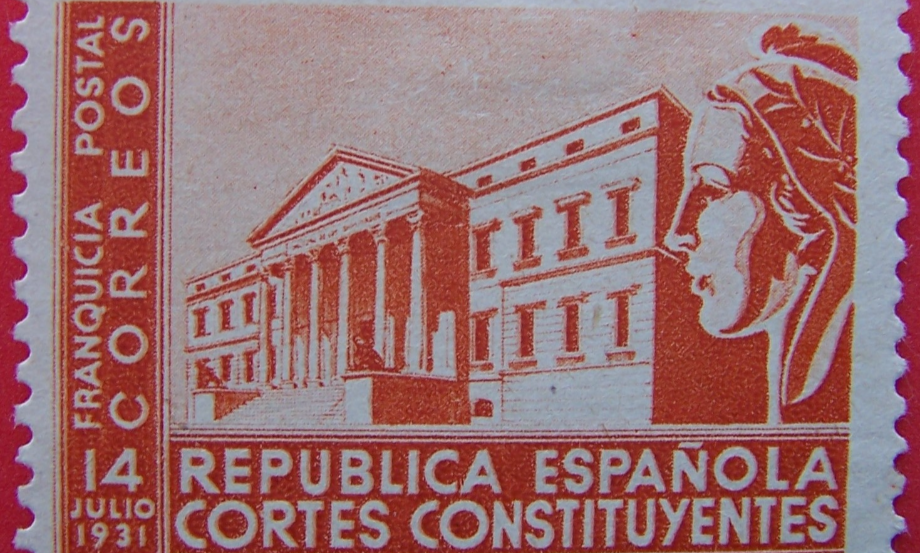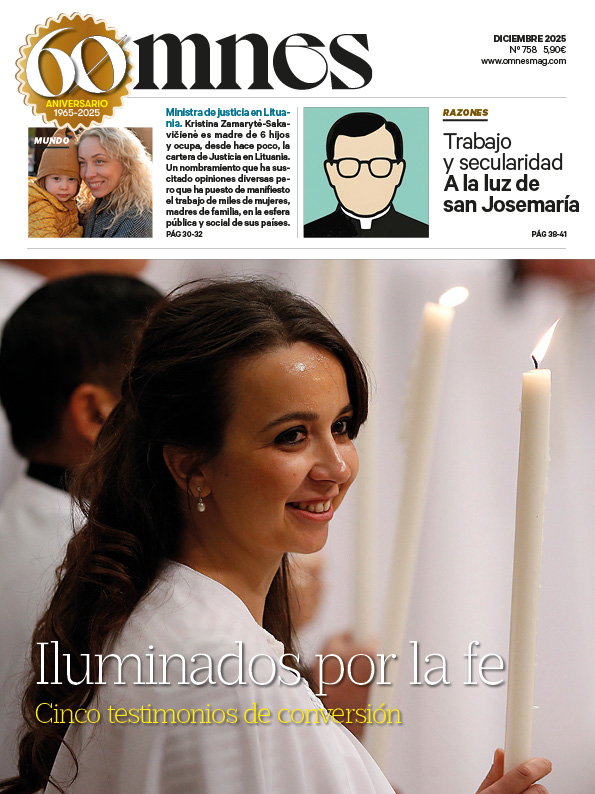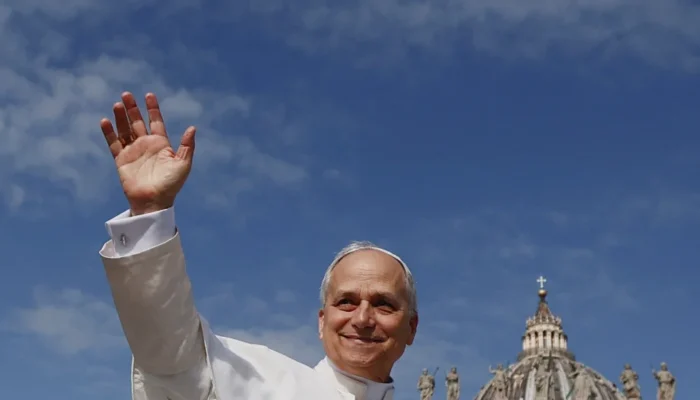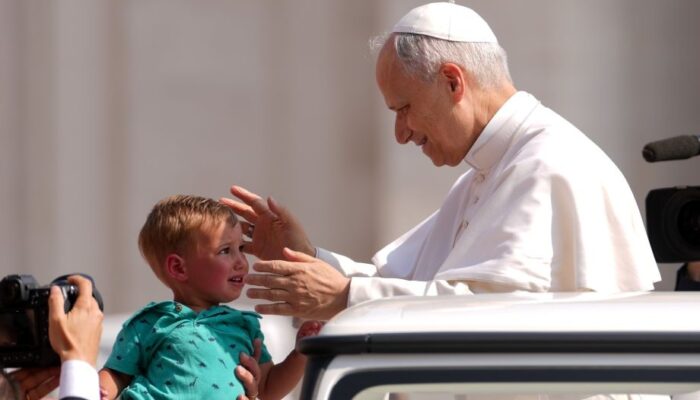Since the end of the 19th century, as a result of the penetration of liberalism in Spain, there was an enormous fracture between the ruling classes of the country and the simple people. If among the former there were cases of agnosticism or simply unbelieving lives, among the latter there was an almost generalized religious faith. On the other hand, there was also a distinction between Christian practice in the life of the suburbs of the big cities and the life of the villages.
The de-Christianization of the masses of workers
In the late nineteenth and early twentieth centuries, the de-Christianization of the working masses in Spain took place, especially with the birth of extreme neighborhoods and poverty in disadvantaged rural areas of the country. Although many initiatives of a social nature were launched, especially since the Encyclical of Leo XIII, Rerum NovarumThe disconnection of large masses of workers from the Christian message is a proven fact.
A key factor in understanding the hatred unleashed during the constitutional period of the Second Spanish Republic was the high degree of illiteracy that Spain suffered during that period. There has been talk of the 40% at the end of the Dictatorship of Primo de Rivera. Only ignorance would explain how priceless works of art could be destroyed, temples that burned without the slightest consideration. And, also, it would explain how it could be believed, for people of the town affirmations as peregrine as that the priests poisoned the fountains or killed children with poisonous candies.
The rise of anticlericalism
On the other hand, since the beginning of the twentieth century, there were consolidated sectors of Spanish intellectuals formed in unbelief, convinced of their atheism and agnosticism, who skillfully moved, mainly through the press, the masses. Undoubtedly, the constant action of Krausism and the Institución Libre de Enseñanza had an influence.
A sector of the republican press insisted, in those years, on seeing the Church as a spiritual power that tyrannized consciences, and therefore it was urgent to free ourselves from it. To this should be added the publishing houses that emerged and the popular editions they published, as well as plays, etc.
The influence of some thinkers, will be always growing, and their aversion to the Church will go from coldness to hostility. Its clearest reflection is the growing anticlericalism and this anticlericalism became a passion among the working masses and in some rural areas. Evidently, they made a miscalculation: neither the Church was the same as in the Old Regime, nor was the Catholic faith as little rooted as they thought. As Álvarez Tardío points out: "It is convenient to reject, therefore, that explanation, as common as it is elementary, according to which the aggressive secularism of the Republicans responded to the intolerable anti-republicanism of the Catholics".
The aim of anticlericalism was not to discuss the doctrine of the Church, or the contents of the Gospel, or the truth of the faith proposed by the Church, but to try to shake off the yoke of conscience, and the social forms shaped by the Church. These new thinkers desired a secular morality and autonomous liberal principles.. It is interesting to note the phenomenon that took place during the 19th century in Spain: the appearance of intellectuals, firstly, and secondly, to see them exercise a moral magisterium, which until then had only corresponded to the Church. Due to the high rate of illiteracy, they did not fail to speak to minorities. Meanwhile, the clergy, through catechesis, teaching and liturgical celebrations, addressed the majority of Spaniards throughout their lives.
Article 26 and the outbreak of the "religious question".
The discussions around article 26 of the Constitution, in October 1931, brought to the surface a wealth of opinions against the action of the Church, with a great deal of passion. As Jackson points out: "As soon as the floodgates were opened, no one was able to reflect calmly on the need for new reflections between Church and State". Thus, it was like an overflow of a river of passions, among which is the name itself: "the religious question", which until then, for the majority of the country was something endearing, appeared as a problem, and, apparently, of importance, because more effort was put into these debates, than in the serious economic, structural, and educational problems.
In spite of everything, the influence of the Catholic Church was very high throughout the country. Both by having in its hands most of the educational centers, as well as through the teachers who, for the most part, were good Catholics.
A large part of the intellectuals, as well as of the managerial classes, were Catholics of good formation, even if their spiritual practice was more or less fervent. Of course, social customs were basically Christian. They kept their manners. Undoubtedly, there was a lack of Catholic intellectuals with the adequate preparation to present the Christian message in an exciting way, with more strength and personal coherence.
It is interesting to note the good general situation of the clergy during the Second Republic. This was the result of the seminaries and the degrees obtained there, or in Rome at the Gregorian University. The clergy and the bishops enjoyed spiritual health: there was an abundance of pious, virtuous, dedicated, exemplary priests. In fact, the number of martyrs and confessors in the Civil War was striking.
The myth of a backward Church
Intellectually they lived enclosed in a small intellectual world, but neither the bishops, nor the clergy had been affected by the modernist crisis that altered Europe, years before. On the other hand, it is convenient to remember the situation of the Spanish Faculties of Theology since 1851, when they ceased to belong to the Civil University, had been declining in prestige and scientific level. In 1932 Pius XI published the "Deus scientiarum Dominus"This was the first time that the Spanish Faculty of Theology had been created. In fact, in 1933 most of these Spanish Faculties were closed and only the one at Comillas was left. In 1933 a canonical visitation of all the seminaries in Spain took place. The clergy was abundant, but poorly distributed.
Nor can it be forgotten that the prevailing philosophy of many university students was that of faith in scientific progress, and therefore in a new era of progress without God, or at least where God was in parentheses. Ortega y Gasset appeared as a close model for many men formed around the ideas of the Institución Libre de Enseñanza. In the heat of those ideas, the false appreciation of the Church as the enemy of human progress had been consolidated.
On the other hand, in many villages, a faith consolidated over centuries was preserved, where life revolved around the practice of the sacraments and the liturgical seasons, filling the customs, folklore and habits of life. There were agnostics and unbelievers, but the majority were Christians at heart.
Catholics in the Republic: between commitment and disappointment
The arrival of the Republic on April 14, 1931, and the rapid elections of the Constituent Courts, produced results that foreshadowed the worst for Church-State relations, since the majority of the deputies elected were from the left and from the Radicals, who had survived the Dictatorship of Primo de Rivera.
In fact, on May 6, the Gaceta de Madrid published a circular declaring the teaching of religion in Primary Education to be voluntary. It was the consequence of having suppressed, days before, the confessionalism of the State. In fact, in May 1931, churches and works of art were burned, such as the Inmaculada de Salcillo in Murcia.
For this reason, when the majority of the deputies of the Chamber proceeded to discuss the articles of the Constitution, they presented a frontal battle against the Church. Most of these deputies lacked the necessary intellectual level, as well as religious training, with the exception of some intellectuals of recognized prestige. But, in the end, the debates only served to highlight the law of arithmetic against reason.
Everything seems to indicate that the Republican left presented the religious question independently of the real situation of the country and the opinion of Catholics about the Republic; what bothered them was the presence of Catholicism in social and cultural life.
When reviewing the actions of the protagonists: dignitaries of the Church, members of the government, parliamentarians, the press of those days, etc., it is clear that those Cortes did not represent the reality of the country, but they did show in all its crudeness the different positions against the Church that existed at that time in Spain. The result, as is well known, was a Magna Carta that could not be an instrument of concord and pacification, since it was born against the will of the majority of the citizens.
Once again, in connection with the 19th century, a small minority tried to correct the course of a country by pretending, through Constitutions, an evolution. "A country can be decatolized, but not by virtue of a law". In the end, a true democratic culture was lacking.
Some of the Republican deputies were Catholics and had played a fundamental part in the birth of the Republic, for example, Niceto Alcalá Zamora, who in his famous speech against the anti-church provisions of article 26 of the Constitution, on October 10, 1931, which led to his resignation as President of the Government, said: "I have no conflict of conscience. My soul is the daughter of religion and revolution at the same time, and the peace of it consists in the fact that when the two currents are mixed, I find them in agreement in the expression of the same source, of the same criterion, which reason elevates to the ultimate principles and faith embodies them in the teaching of the Gospel. But I, who have no problem of conscience, have a conscience (...). And what remedy is left to me? Civil war, never (...). For the good of the homeland, for the good of the Republic, I ask you for the formula of peace". He would embody what he called the third Spain. A truly democratic, non-denominational government of the center. His illusion was that the Republic would have contained the Social and anticlerical Revolution.
It is convenient to remember the famous and contemporary speech of Manuel Azaña, on October 13, 1931: "I have the same reasons to say that Spain has ceased to be Catholic, as I have to say the opposite of the old Spain. Spain was Catholic in the 16th century, in spite of the fact that there were many and very important dissidents here, some of whom are the glory and splendor of Castilian literature, and Spain has ceased to be Catholic, in spite of the fact that there are now many millions of Catholic Spaniards, believers". The translation is clear: the State is no longer Catholic. Once the premise is accepted, which would be valid: if all Spaniards democratically decide that the State is not confessional. Now, what would not make sense is that it becomes anti-Catholic, and then the State persecutes the Church, deprives it of freedom, and pretends to subject it to itself.
It was not the first time that a small group in the name of democracy had tried to subjugate the conscience of the majority. But the acceleration of history does a lot of damage.
Indeed, most of the laws that were enacted were a consequence of the principle of secularization of the State, but many others were an attack against the freedom proclaimed for all in the Constitution. This lack of truth would make it clear that they did not seek the common good, but rather partisan interests, and ended up breaking harmony and peaceful coexistence. Of course, "a democratic culture was not achieved, but an alternative".
Education, the epicenter of confrontation
The intention of the parliamentary majority in the Constituent Courts was to remove the Church from teaching, as shown in Article 16 of the Constitution, but in practice it was unfeasible to build as many schools and train as many teachers as would be needed.
Finally, it is worth remembering the words of another President of the Government during the Republic, Lerroux, who pointed out the following: "The Church had not received the Republic with hostility. Its influence in a traditionally Catholic country was evident. To provoke it to fight, as soon as the new regime was born, was impolitic and unjust, therefore unwise".
The reaction of the Spanish episcopate
It is important to emphasize that the attitude of the Holy See before the arrival of the Second Republic on April 14, 1931, was cordial. As demonstrated by the abundant negotiations of the Nuncio and the Spanish Prelates.
On the other hand, the Archbishop of Toledo, Cardinal Segura, became an uncomfortable character, due to his traditionalist approach in the line that the Church should guide the work of the State, and that he did not hide his support to the monarchy. The Republic managed to expel him from Spain and the Holy See, in a gesture of ingratiation with the Republic, removed him from the See of Toledo on 1.X.1931 and replaced him with Cardinal Gomá. However, it should not be forgotten that the Government of the Republic, on 18.V.1931 promoted the expulsion of the Bishop of Vitoria, Múgica, raising the problem of Carlism as an anti-republican force and its influence on the Basque-Navarre people.
Thus, when the Constitution was adopted in a short period of time, in the early stages, the reaction of the The Vatican and of the Spanish bishops was one of serene expectation. The Joint Declaration of the Spanish episcopate of December 20, 1931, came out in the wake of the Constitution approved on December 12, recalling that the right and freedom approved in the Constitution were for all.
Niceto Alcalá Zamora himself resigned as President of the Government in order not to approve those anti-Catholic articles, but he presented his candidacy for the Presidency of the Republic, in order to -in time- bring those articles back into line with the objective situation of the country. And, there he remained, until April 1939.











